
Allied troops on the beach at Dunkirk waiting for evacuation
Code-named Operation Dynamo, the Dunkirk Evacuation took place May 26 to June 4, 1940, during World War II as part of the Battle of France. During the operation, more than 338,000 Allied troops were successfully evacuated from the beach at Dunkirk (Dunkerque) following the German invasion of France.
Background
When Germany invaded Belgium and the Netherlands in a blitzkrieg attack in May 1940, its troops also unexpectedly pushed into France through the lightly defended Ardennes forest region, which the French had believed to be impenetrable.
Under the onslaught, Allied troops fell back toward the English Channel, where they became trapped in an increasingly smaller pocket on the northern French coast.
Dunkirk Evacuation
The British decided to evacuate their expeditionary force (the BEF) from the harbor at Dunkirk, though they initially expected only about 45,000 troops could be saved.
But Hitler and the German high command unintentionally gave the Allies more time to evacuate by ordering Germany’s armored units to pause their advance. Air support from the Royal Air Force also facilitated the evacuation, as did the defense of the Dunkirk perimeter, particularly by French troops.
Despite deadly attacks on Dunkirk by the Luftwaffe, Britain evacuated more than 338,000 troops across the English Channel, including some 140,000 French and Belgian soldiers. Navy ships were aided by hundreds of civilian watercraft that afterward became known as the “Little Ships of Dunkirk.”
Aftermath & Legacy
The evacuation ended June 4, when the Germans occupied Dunkirk. That same day, British Prime Minister Winston Churchill gave his famous “We Shall Fight on the Beaches” speech.
The evacuation came to be known in Britain as the “Miracle of Dunkirk,” and the term “the Spirit of Dunkirk” became a symbol to the nation of resilience and resolve. Although Dunkirk was a victory for Germany, Hitler’s halting of his armored troops is viewed today as one of Germany’s major mistakes of the war.
Learn more about the Dunkirk Evacuation through historical newspapers from our archives. Explore newspaper articles, headlines, images, and other primary sources below.
Articles and Clippings about the Dunkirk Evacuation
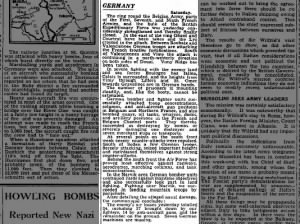 Germany reports it strengthened the "ring" around Allied forces in days before Dunkirk Evacuation Mon, May 27, 1940 – 7 · The Guardian (London, Greater London, England) · Newspapers.com
Germany reports it strengthened the "ring" around Allied forces in days before Dunkirk Evacuation Mon, May 27, 1940 – 7 · The Guardian (London, Greater London, England) · Newspapers.com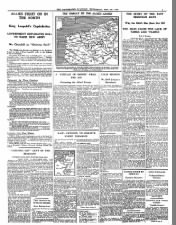 News, reports, maps & opinions about the Allied situation in France from 29 May 1940 Wed, May 29, 1940 – 5 · The Guardian (London, Greater London, England) · Newspapers.com
News, reports, maps & opinions about the Allied situation in France from 29 May 1940 Wed, May 29, 1940 – 5 · The Guardian (London, Greater London, England) · Newspapers.com Prime Minister Winston Churchill's statement on the "extremely grave" situation of the Allies Wed, May 29, 1940 – 6 · The Guardian (London, Greater London, England) · Newspapers.com
Prime Minister Winston Churchill's statement on the "extremely grave" situation of the Allies Wed, May 29, 1940 – 6 · The Guardian (London, Greater London, England) · Newspapers.com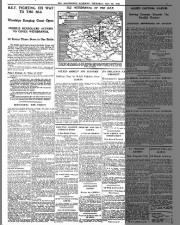 British newspaper coverage of Dunkirk Evacuation from 30 May 1940 Thu, May 30, 1940 – 5 · The Guardian (London, Greater London, England) · Newspapers.com
British newspaper coverage of Dunkirk Evacuation from 30 May 1940 Thu, May 30, 1940 – 5 · The Guardian (London, Greater London, England) · Newspapers.com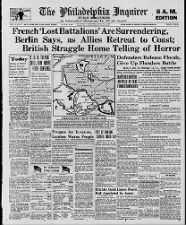 American newspaper front page coverage of the Allied retreat during the Dunkirk Evacuation Thu, May 30, 1940 – Page 1 · The Philadelphia Inquirer (Philadelphia, Pennsylvania) · Newspapers.com
American newspaper front page coverage of the Allied retreat during the Dunkirk Evacuation Thu, May 30, 1940 – Page 1 · The Philadelphia Inquirer (Philadelphia, Pennsylvania) · Newspapers.com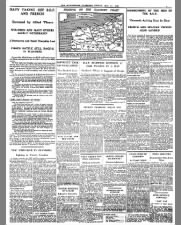 British newspaper coverage of Dunkirk Evacuation from 31 May 1940 Fri, May 31, 1940 – 5 · The Guardian (London, Greater London, England) · Newspapers.com
British newspaper coverage of Dunkirk Evacuation from 31 May 1940 Fri, May 31, 1940 – 5 · The Guardian (London, Greater London, England) · Newspapers.com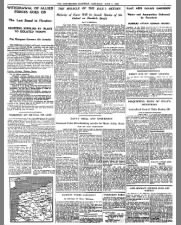 British newspaper coverage of Dunkirk Evacuation from 1 June 1940 Sat, Jun 1, 1940 – 7 · The Guardian (London, Greater London, England) · Newspapers.com
British newspaper coverage of Dunkirk Evacuation from 1 June 1940 Sat, Jun 1, 1940 – 7 · The Guardian (London, Greater London, England) · Newspapers.com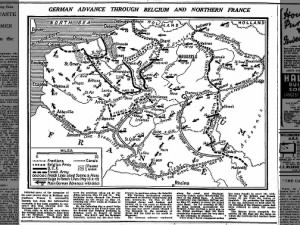 Map of the German advance through Belgium and Northern France in May 1940 Sat, Jun 1, 1940 – 8 · The Guardian (London, Greater London, England) · Newspapers.com
Map of the German advance through Belgium and Northern France in May 1940 Sat, Jun 1, 1940 – 8 · The Guardian (London, Greater London, England) · Newspapers.com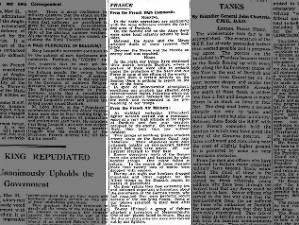 Report from French military during Dunkirk Evacuation Sat, Jun 1, 1940 – 9 · The Guardian (London, Greater London, England) · Newspapers.com
Report from French military during Dunkirk Evacuation Sat, Jun 1, 1940 – 9 · The Guardian (London, Greater London, England) · Newspapers.com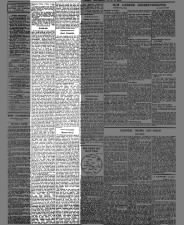 Editorial published during the Dunkirk Evacuation about factors leading to a successful withdrawal Sat, Jun 1, 1940 – 6 · The Guardian (London, Greater London, England) · Newspapers.com
Editorial published during the Dunkirk Evacuation about factors leading to a successful withdrawal Sat, Jun 1, 1940 – 6 · The Guardian (London, Greater London, England) · Newspapers.com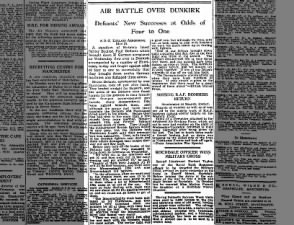 Account of British Royal Air Force "air battle over Dunkirk" Sat, Jun 1, 1940 – 4 · The Guardian (London, Greater London, England) · Newspapers.com
Account of British Royal Air Force "air battle over Dunkirk" Sat, Jun 1, 1940 – 4 · The Guardian (London, Greater London, England) · Newspapers.com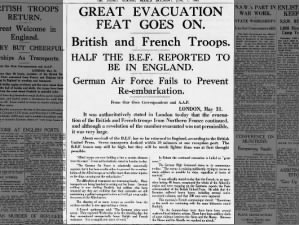 Australian newspaper headlines from the Dunkirk Evacuation in 1940 Sat, Jun 1, 1940 – Page 15 · The Sydney Morning Herald (Sydney, New South Wales, Australia) · Newspapers.com
Australian newspaper headlines from the Dunkirk Evacuation in 1940 Sat, Jun 1, 1940 – Page 15 · The Sydney Morning Herald (Sydney, New South Wales, Australia) · Newspapers.com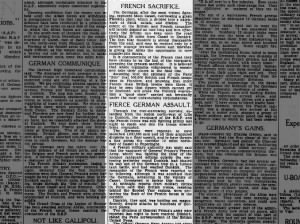 Article reports that French regiments volunteer to form rearguard of Dunkirk Evacuation Sat, Jun 1, 1940 – Page 15 · The Sydney Morning Herald (Sydney, New South Wales, Australia) · Newspapers.com
Article reports that French regiments volunteer to form rearguard of Dunkirk Evacuation Sat, Jun 1, 1940 – Page 15 · The Sydney Morning Herald (Sydney, New South Wales, Australia) · Newspapers.com British op-ed calling the 1940 Dunkirk Evacuation "the Great Deliverance" Sun, Jun 2, 1940 – 6 · The Observer (London, Greater London, England) · Newspapers.com
British op-ed calling the 1940 Dunkirk Evacuation "the Great Deliverance" Sun, Jun 2, 1940 – 6 · The Observer (London, Greater London, England) · Newspapers.com British newspaper coverage of Dunkirk Evacuation from 3 June 1940 Mon, Jun 3, 1940 – 5 · The Guardian (London, Greater London, England) · Newspapers.com
British newspaper coverage of Dunkirk Evacuation from 3 June 1940 Mon, Jun 3, 1940 – 5 · The Guardian (London, Greater London, England) · Newspapers.com Description of the "Little Ships of Dunkirk" during the 1940 evacuation Mon, Jun 3, 1940 – Page 9 · The Sydney Morning Herald (Sydney, New South Wales, Australia) · Newspapers.com
Description of the "Little Ships of Dunkirk" during the 1940 evacuation Mon, Jun 3, 1940 – Page 9 · The Sydney Morning Herald (Sydney, New South Wales, Australia) · Newspapers.com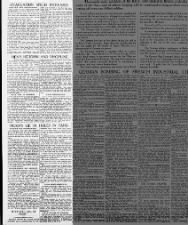 Various firsthand and eye-witness accounts of the Dunkirk Evacuation in 1940 Mon, Jun 3, 1940 – Page 9 · The Sydney Morning Herald (Sydney, New South Wales, Australia) · Newspapers.com
Various firsthand and eye-witness accounts of the Dunkirk Evacuation in 1940 Mon, Jun 3, 1940 – Page 9 · The Sydney Morning Herald (Sydney, New South Wales, Australia) · Newspapers.com Article gives account of Red Cross nurses during Dunkirk Evacuation Mon, Jun 3, 1940 – 20 · The Windsor Star (Windsor, Ontario, Canada) · Newspapers.com
Article gives account of Red Cross nurses during Dunkirk Evacuation Mon, Jun 3, 1940 – 20 · The Windsor Star (Windsor, Ontario, Canada) · Newspapers.com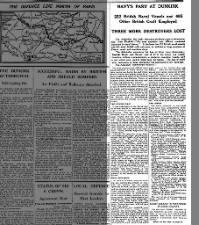 British newspaper article about the "Navy's part at Dunkirk" in 1940 Tue, Jun 4, 1940 – 5 · The Guardian (London, Greater London, England) · Newspapers.com
British newspaper article about the "Navy's part at Dunkirk" in 1940 Tue, Jun 4, 1940 – 5 · The Guardian (London, Greater London, England) · Newspapers.com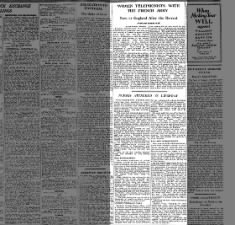 French female telephonists and British nurses are part of the forces evacuated from Dunkirk Tue, Jun 4, 1940 – 9 · The Guardian (London, Greater London, England) · Newspapers.com
French female telephonists and British nurses are part of the forces evacuated from Dunkirk Tue, Jun 4, 1940 – 9 · The Guardian (London, Greater London, England) · Newspapers.com Account of Canadian civilian who took part in the "Little Ships" evacuation of Dunkirk Tue, Jun 4, 1940 – 1 · The Vancouver Sun (Vancouver, British Columbia, Canada) · Newspapers.com
Account of Canadian civilian who took part in the "Little Ships" evacuation of Dunkirk Tue, Jun 4, 1940 – 1 · The Vancouver Sun (Vancouver, British Columbia, Canada) · Newspapers.com Germany captures city of Dunkirk, ending the evacuation of Allied forces Tue, Jun 4, 1940 – Page 1 · Green Bay Press-Gazette (Green Bay, Wisconsin) · Newspapers.com
Germany captures city of Dunkirk, ending the evacuation of Allied forces Tue, Jun 4, 1940 – Page 1 · Green Bay Press-Gazette (Green Bay, Wisconsin) · Newspapers.com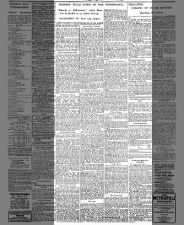 Prime Minister Winston Churchill gives his "We Shall Fight on the Beaches" speech after Dunkirk Wed, Jun 5, 1940 – 2 · The Guardian (London, Greater London, England) · Newspapers.com
Prime Minister Winston Churchill gives his "We Shall Fight on the Beaches" speech after Dunkirk Wed, Jun 5, 1940 – 2 · The Guardian (London, Greater London, England) · Newspapers.com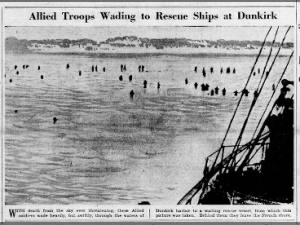 Photo of Allied troops wading to rescue ships at Dunkirk Wed, Jun 5, 1940 – 1 · The Windsor Star (Windsor, Ontario, Canada) · Newspapers.com
Photo of Allied troops wading to rescue ships at Dunkirk Wed, Jun 5, 1940 – 1 · The Windsor Star (Windsor, Ontario, Canada) · Newspapers.com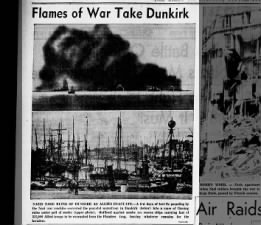 Images of Dunkirk before and after the evacuation and German attack Wed, Jun 5, 1940 – Page 2 · The Pantagraph (Bloomington, Illinois) · Newspapers.com
Images of Dunkirk before and after the evacuation and German attack Wed, Jun 5, 1940 – Page 2 · The Pantagraph (Bloomington, Illinois) · Newspapers.com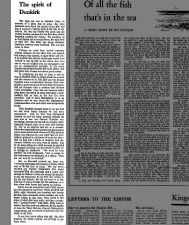 Opinion piece about the "Spirit of Dunkirk" written for the 25th anniversary of the evacuation Sat, Jun 5, 1965 – 8 · The Guardian (London, Greater London, England) · Newspapers.com
Opinion piece about the "Spirit of Dunkirk" written for the 25th anniversary of the evacuation Sat, Jun 5, 1965 – 8 · The Guardian (London, Greater London, England) · Newspapers.com